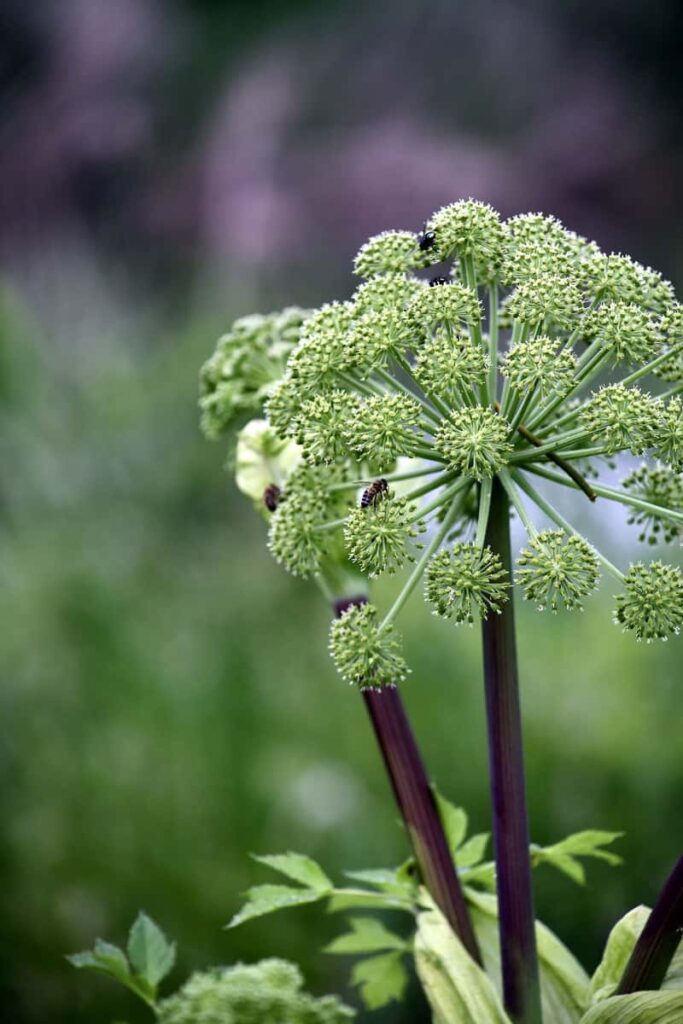Ajwain has a strong, pungent flavor and is often used to flavor curries, vegetables, and lentils. The plant grows about 20 to 60 centimeters tall and has white or pale-yellow flowers. The fruits of the plant are small and have oval-shaped seeds. The leaves are simple, opposite, and ovate-lanceolate with serrated margins. Ajwain can be grown in pots or on the ground, but it needs full sun and well-drained soil to thrive. Due to thymol, the fruits and seeds have a strong, pungent taste and aroma.

How to grow Ajwain Plant
Types of Ajwain
There are two main types of Ajwain: black and white. Black Ajwain is more common in India, while white Ajwain is more common in Pakistan. Both Ajwain types have a strong, pungent flavor similar to Oregano or Thyme.
Climate suitable for growing Ajwain plant
Ajwain is a hardy plant that can grow in various climates, from tropical to subtropical. However, it prefers a warm climate with plenty of sunlight. Ajwain can be grown in dry and wet soils, but well-drained soil is best. The plant does not tolerate frost and should be protected from cold weather. Ajwain plants thrive in full sun and well-drained soil.
In case you missed it: List of Plants You Can Propagate in Water: Easy and Best Plants to Grow
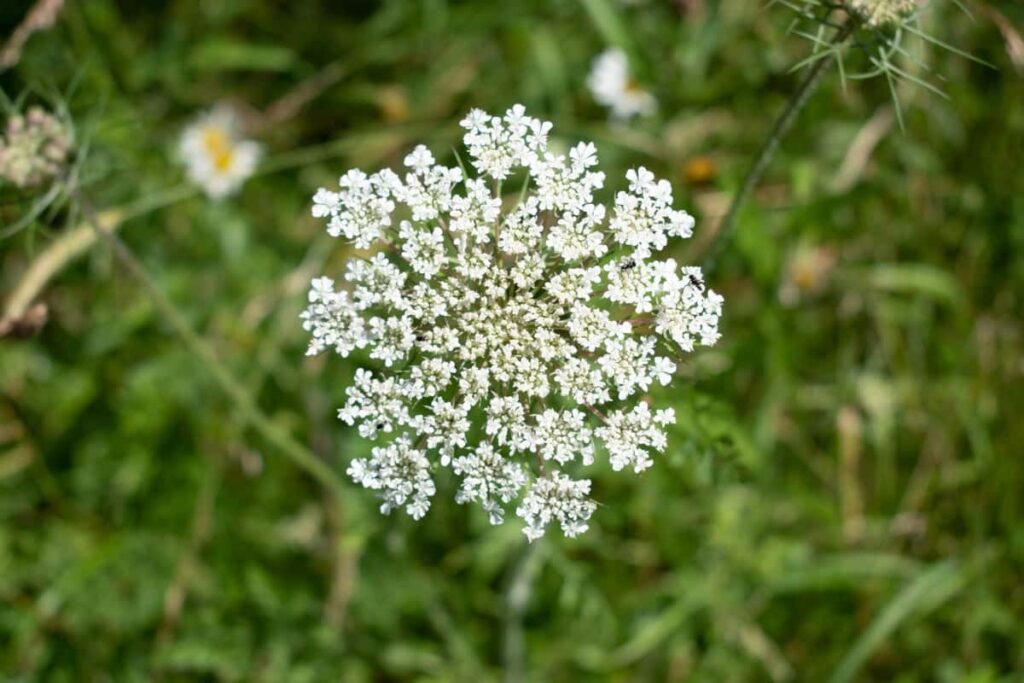
The ideal temperature for growing Ajwain is between 15°C to 25°C. Ajwain can be grown in containers or on the ground. The Ajwain plant grows well in partial shade to full sunlight. The plant is not getting proper sunlight if the leaves turn dark green.
Water requirement for growing Ajwain plant
Ajwain plants require very little water and can even thrive in drought-like conditions. When watering your Ajwain plant, be sure to do so sparingly. Too much water can harm the plant. Ajwain prefers well-drained soil and needs about 1 inch of water per week. You may need to water your Ajwain more often if you live in an area with little rainfall.
The Ajwain plant requires moderate water daily. Ensure you don’t overwater the plant, as it can spoil it. As well as keep the soil drainage in check to ensure that the water is not clogging; for this purpose, you can use well-aerated soil with a little mixture of coarse sand.
Soil requirement for growing Ajwain plant
To grow Ajwain, you will need well-drained soil with a pH of 6.0-7.5. Ajwain prefers full sun but can tolerate partial shade. It is drought tolerant but does not like wet feet. The most important thing you do when growing Ajwain is appropriately prepare the soil. The first step is to test the soil pH. Ajwain prefers slightly acidic soil, so if your soil is too alkaline, you’ll need to add some sulfur or other amendments to lower the pH.
Once you know the pH of your soil, you can add any amendments that may be necessary. You’ll need to add some organic matter if your soil is too sandy to help it hold onto moisture. If it’s too clayey, you’ll need to add sand or other gritty material to improve drainage. Once you’ve amended the soil as needed, it’s time to till it. This will help break up any large clumps and ensure the amendments are evenly distributed throughout the planting area. You can do this by hand with a spade or hoe, or you can use a tiller.
Propagation of Ajwain plant
Ajwain propagation is relatively easy and can be done by seed or stem cuttings. If you’re propagating by seed, sow the seeds in a well-draining potting mix and water regularly. For stem cuttings, take 4 to 6-inch cuttings from healthy, non-flowering stems and root them in a potting mix. Keep the soil moist; you should see new growth within a few weeks.
In case you missed it: How to Grow Turtle Vine Plant: Soil, Propagation, Planting, and Care
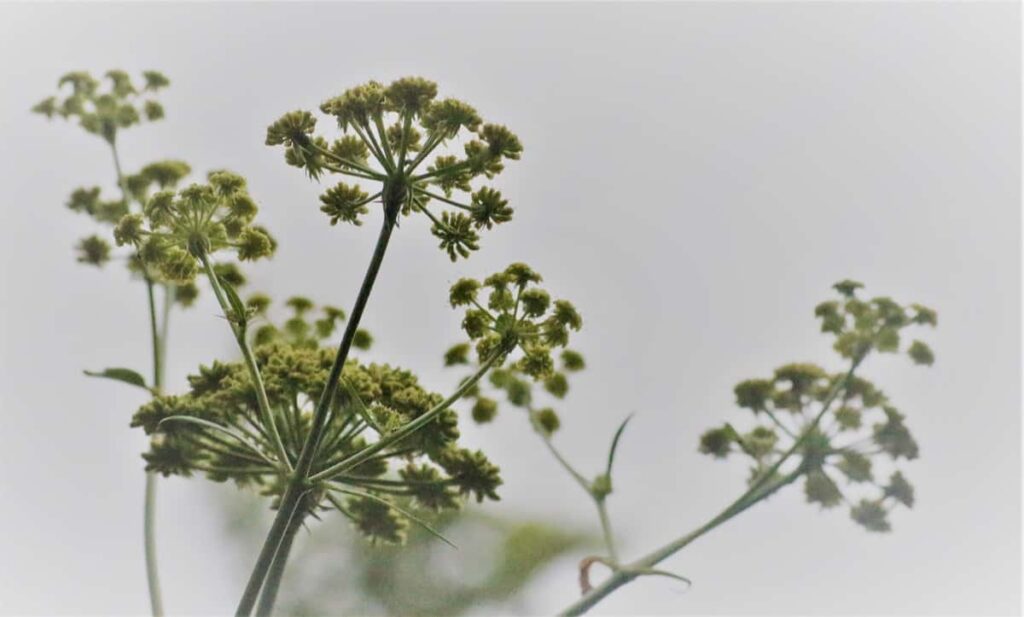
From seeds
To germinate Ajwain seeds, first soak the Ajwain seeds in water for 24 hours. Then, drain the water and place the seeds on a damp paper towel. Over the seeds, please fold the paper towel, and place them in a warm, dark place. Check on the seeds daily, and mist them with water if they start to dry out. After 7 to10 days, the seeds should sprout. Once they sprout, transplant them into pots filled with potting soil, and place them in a sunny spot. When planting Ajwain in a pot, you should choose a pot at least 12 inches wide with drainage holes.
The best time to sow Ajwain seeds is spring after the last frost. To grow Ajwain from seed, you should sow the seeds after all risk of frost has passed. You can directly sow the seeds in the garden or moisten the potting mix. You should cover the Ajwain seeds with a thin layer of soil and keep them moist until they germinate. Thin them out once the seedlings have emerged so they have spaced about 20 centimeters apart. Keep the plants watered during dry periods and fertilize monthly with a balanced liquid fertilizer.
From cuttings
To propagate Ajwain, take 4 to 6-inch cuttings from the tips of new growth and remove the lower leaves. You should dip the cutting into the rooting hormone and plant in moistened perlite or sand. Place the pots in bright indirect light and keep the perlite or sand moist but not soggy. New roots should form within four weeks when you can transplant the rooted cuttings into individual pots filled with potting mix.
Transplanting Ajwain seedlings
To transplant Ajwain seedlings, prepare the planting area by clearing away debris and loosening the soil. Then, carefully remove the seedlings from their current containers and place them in the prepared holes. Gently firm the soil around the base of each seedling, careful not to damage the roots. Until the seedlings are established, water well and keep the soil moist.
In case you missed it: Grow Bag Size Chart in India: For Vegetables, Herbs, and Fruits
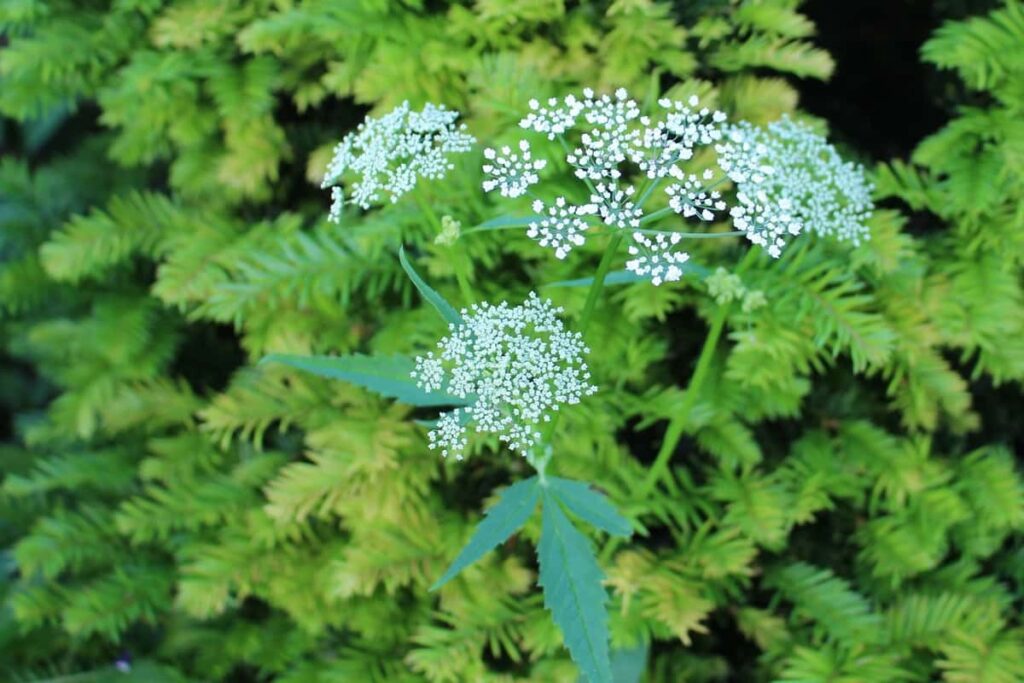
Ajwain plant care
Fertilizer requirement for growing Ajwain plant
When it comes to fertilizing Ajwain, less is more. Too much fertilizer can harm the plant. Ajwain does best with a light application of compost or manure in the springtime. Once your plant is established, you need to fertilize it monthly with a balanced fertilizer such as 10-10-10. Apply fertilizer Around the base of the Ajwain plant. Water the fertilizer into the soil deeply. Apply the fertilizer according to the manufacturer’s instructions, as too much can damage the plant roots. Ajwain prefers loamy soil that is well-drained and rich in organic matter.
You can use compost or manure to add organic matter to the soil. This will help improve drainage and aeration while also providing nutrients for the plant. It is essential to use aged manure or compost so that it does not burn the roots of the plant. Ajwain thrives in warm climates and needs very little attention. The best fertilizer for Ajwain is a balanced, all-purpose fertilizer applied once a month during the growing season. If you are growing Ajwain in containers, use a high-quality potting mix and fertilize according to the manufacturer’s instructions.
In case you missed it: Growing Morning Glory Flowers: How to Plant and Care
Ajwain plant pruning
Pruning for Ajwain is essential in keeping your plant healthy and producing a good crop. Prune regularly during the growing season to keep the plant tidy and encourage new growth. Cut back any straggly or diseased branches. When harvesting, cut the stems just above where the leaves join the stem. This will encourage new growth.
Pruning of Ajwain is necessary to promote new growth and keep the plant healthy. You should prune your Ajwain plants in early spring before new growth begins. Cut back the main stem by about one-third of its length to encourage new growth. When pruning for Ajwain, it is essential to use clean, sharp tools and ensure that you do not damage the plant.
Pest and diseases of Ajwain and their control
Pests are a major problem for Ajwain farmers. The most common pests are aphids, whiteflies, and mealybugs. These pests can be controlled with the use of pesticides. Ajwain is a plant that is susceptible to several diseases. The most common disease of Ajwain is Alternaria blight, which can cause the plant leaves to turn yellow and drop off. To control Alternaria blight, it is essential to water the plant deeply and evenly and to avoid overhead watering. If the plant is infected with powdery mildew, it is essential to remove all affected leaves and treat the plant with a fungicide.
Ajwain harvesting time
After six to seven weeks, leaves are ready to be harvested. To harvest Ajwain seeds, permit the seed heads to dry on the plant. Once dry, remove the seed heads and thresh them to release them. The seeds can then be stored in an airtight container for future use. When growing Ajwain, it is essential to know that the yield of this crop can vary greatly depending on the growing conditions.
In case you missed it: How to Grow Medicinal Plants in the Backyard: Medicinal Herb Gardening for Beginners
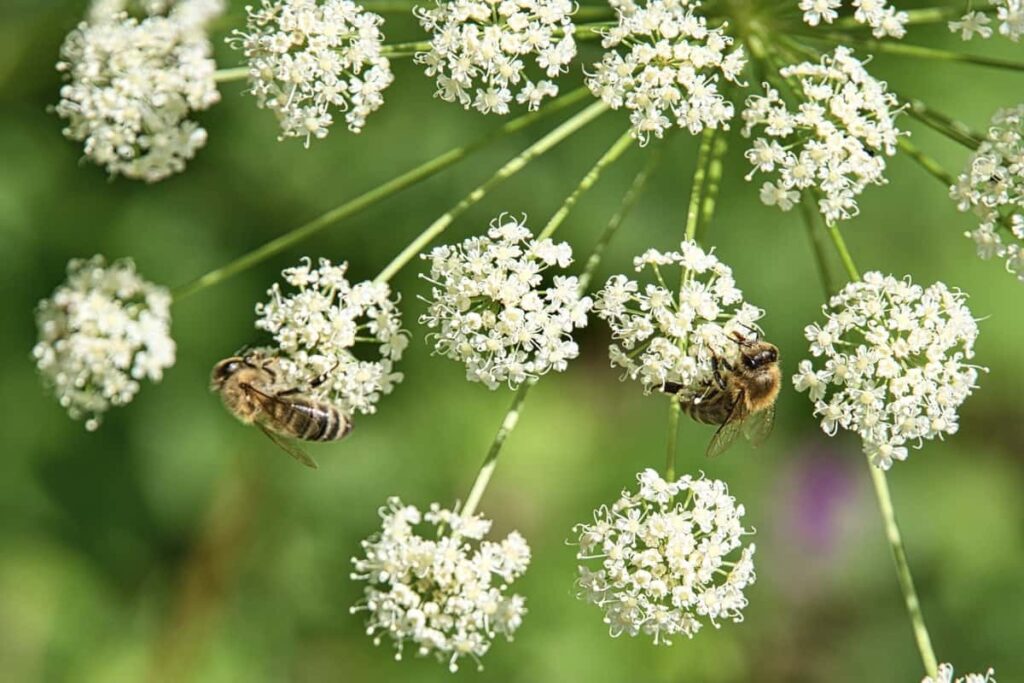
Yield of Ajwain
Ajwain plants will generally produce about 28 to 56 grams of seeds per plant. However, if the conditions are ideal (plenty of sunlight and water), a single plant can produce up to 113 grams of seeds. The seeds can then be collected by hand and dried for future use.
Conclusion
You can easily grow the Ajwain plant, and equally good to look at. You can grow it as a hedge in a small garden because it’s wide enough and fills fast, but be careful because it can kill other plants. You can plant Ajwain seeds indoors or outdoors, requiring considerable sunlight to grow well. Ajwain plants have many health benefits besides different flavors. If you fulfill the needs of the Ajwain plant, you will get a bountiful harvest.
- How to Grow Tomatoes Organically at Home: A Comprehensive Guide
- Organic Gardening on a Budget: Low-Cost Methods and Materials
- Gongura Seed Germination and Planting Methods
- Cabbage Seed Germination and Selection
- Broccoli Seed Germination and Selection
- Asparagus Seed Germination and Variety Selection
- Seasonal Flower Gardening: Best Practices for Spring, Summer, Fall, and Winter
- How to Grow Hibiscus from Flower
- Plantation Ideas for Home Decoration: A Beginners Guide
- Flower Garden Designs and Layouts for Beginners
- Planting and Spacing Techniques in Papaya: A Beginner’s Guide
- Growing Gold: Essential Techniques for Planting Pineapples
- How to Make Kalanchoe Plant Bushy: Home Remedies and Solutions
- 11 Reasons Why Your Gardenia is Not Blooming: Home Remedies and Solutions
- Eco Elegance: The Guide to Designing a Drought-Tolerant Landscape
- Gardening on a Slope: Strategies for Hillside Landscaping
- Nourish and Flourish: Top Organic Mulches for Thriving House Plants
- Everything You Want to Know about Indian Mogra Flower: Discover Uses and Growing
- Green Thumb Success: Expert Tips for Cultivating Greenhouse Pumpkins All Year Round
- Maximize Growth & Flavor: The Ultimate Guide to Companion Planting in Herb Gardens
- How to Control Rhododendron Problems Naturally: Home Remedies and Organic Ways to Fix Them
- Natural Magic: The Remarkable Benefits of Cinnamon for Plants
- Best Steps to Revive Dying Tulip with Natural and Organic Treatment
- 10 Reasons Why Your Angel Trumpet is Not Blooming: Remedies and Treatment
- How to Fix Periwinkle Leaf and Flower-Related Problems: Natural Remedies and Solutions
- How to Fix Zinnias Leaf and Flower Problems: Discover Natural and Home Remedies
- Organic Steps to Induce Lemon Tree Flowers: A Comprehensive Guide
- Bloom Booster: Crafting the Perfect Homemade Bougainvillea Fertilizer
- Optimizing Growth: A Guide to Applying NPK Fertilizer for Potted Plants
- 10 Best Homemade Fertilizers for Rubber Plant: DIY Recipes and Application Method
- How to Boost Female Pumpkin Flowers: Effective Steps for More Flowers and High Yields
- Transform Your Indoor Garden: Top Benefits of Pink Salt for Houseplants
- 10 Best Homemade Fertilizers for Peacock Plants (Calathea): Easy DIY Guide
- Unlock Blooms: 9 Reasons Why Your Potted Chrysanthemum is Not Blooming
- 8 Reasons Why Your Potted Hibiscus is Not Blooming: Fix it with Simple Solutions
- Unlock Blooms: 9 Key Reasons Your Potted Frangipani Won’t Flower
